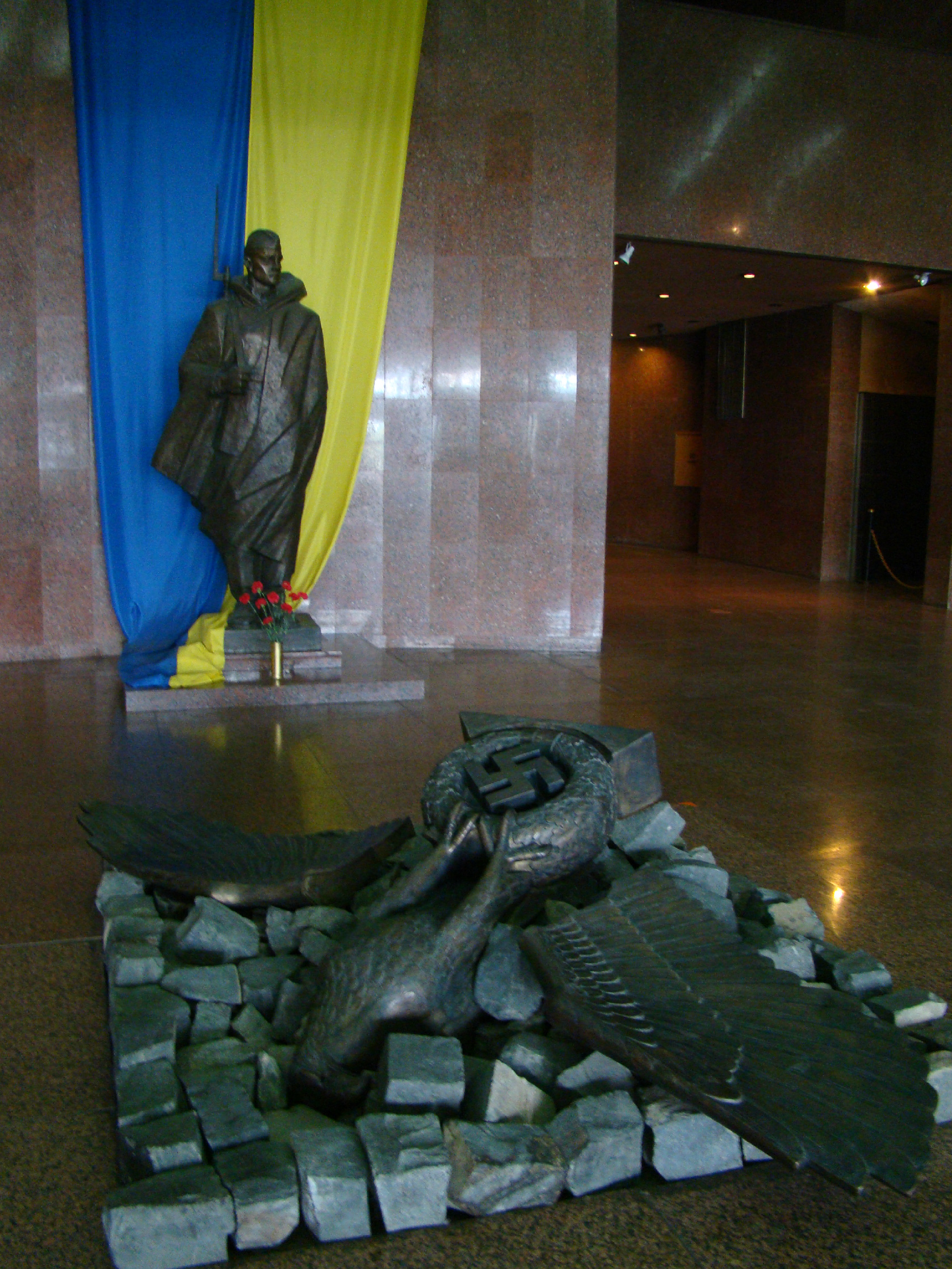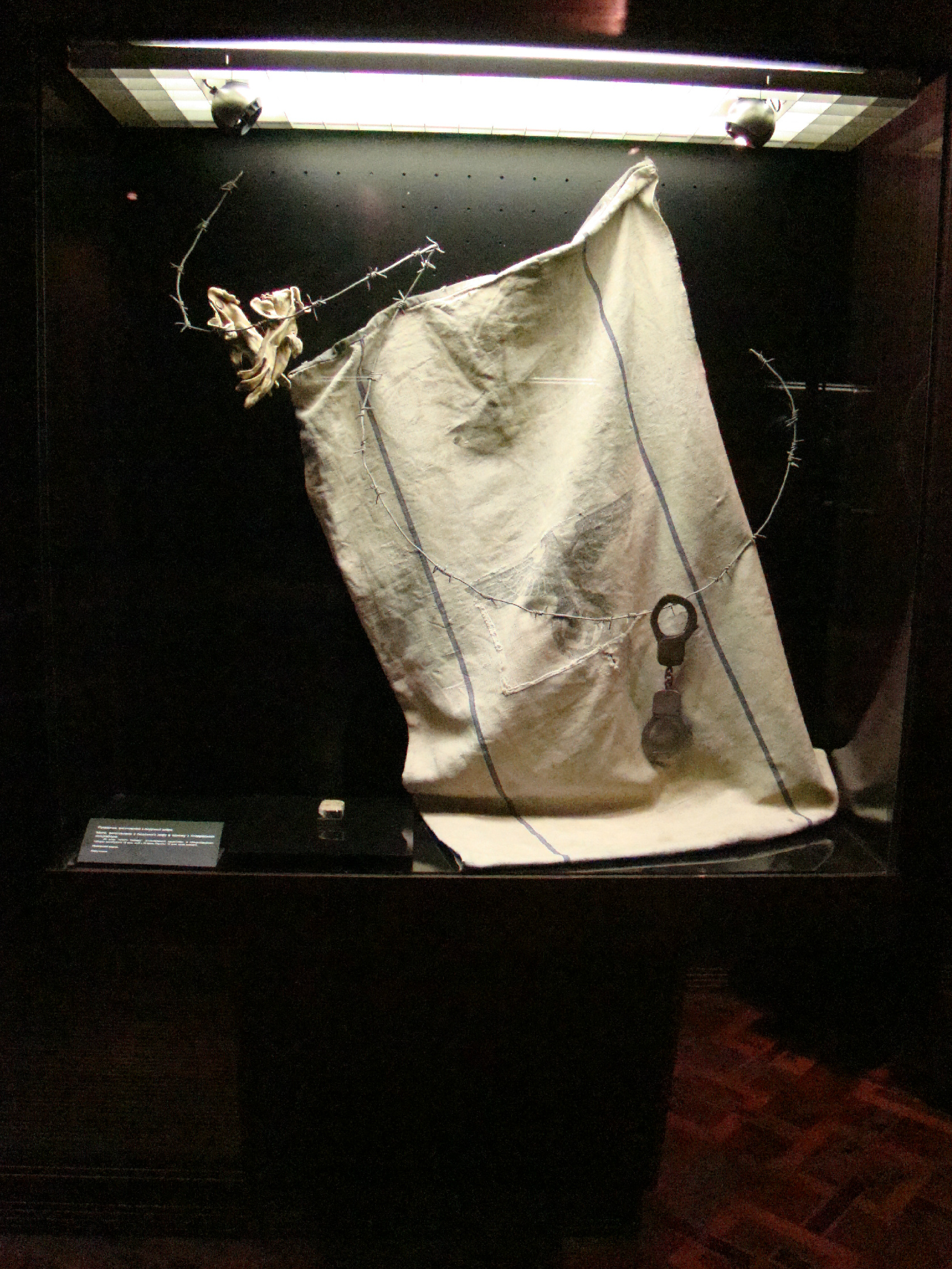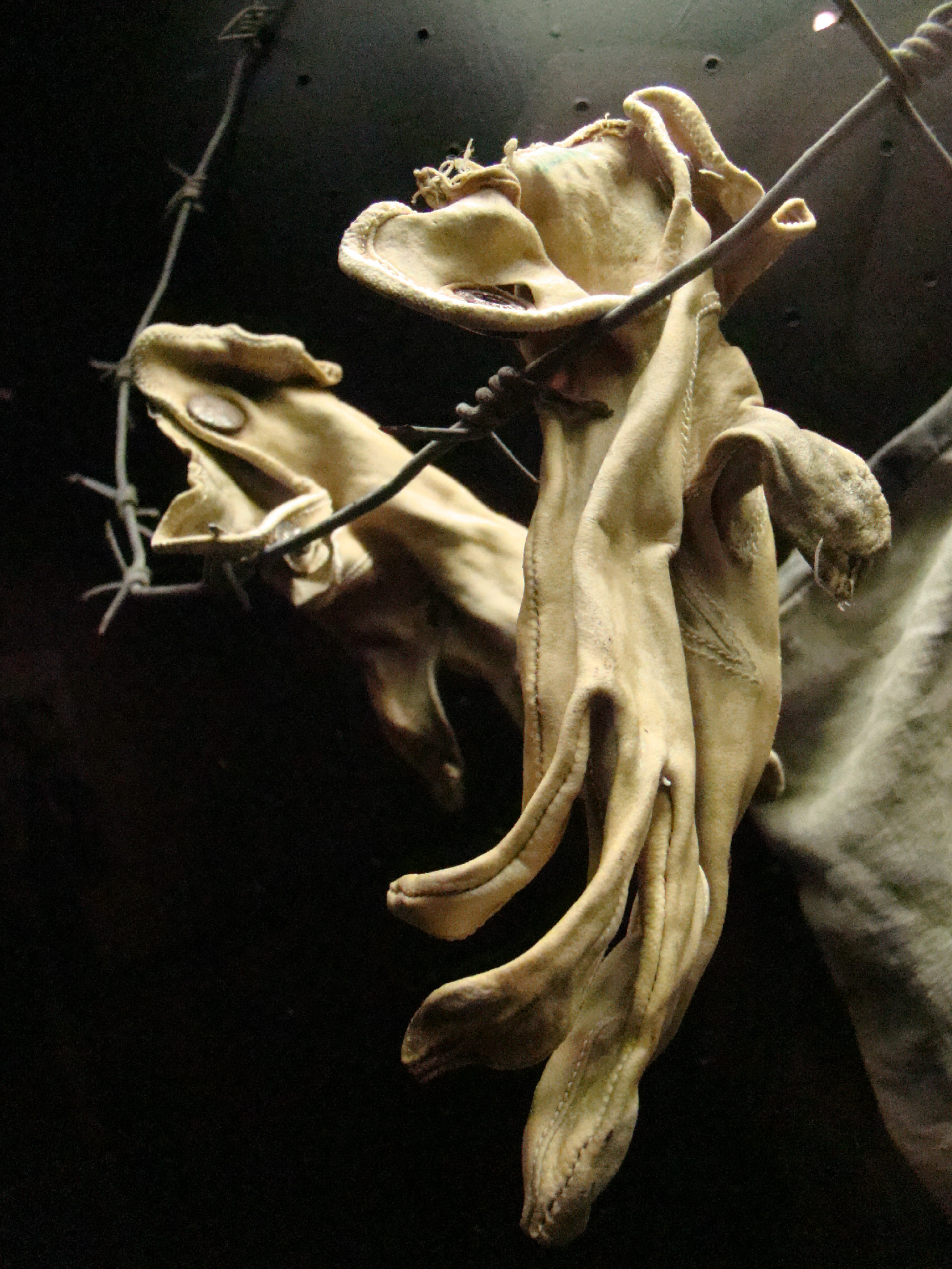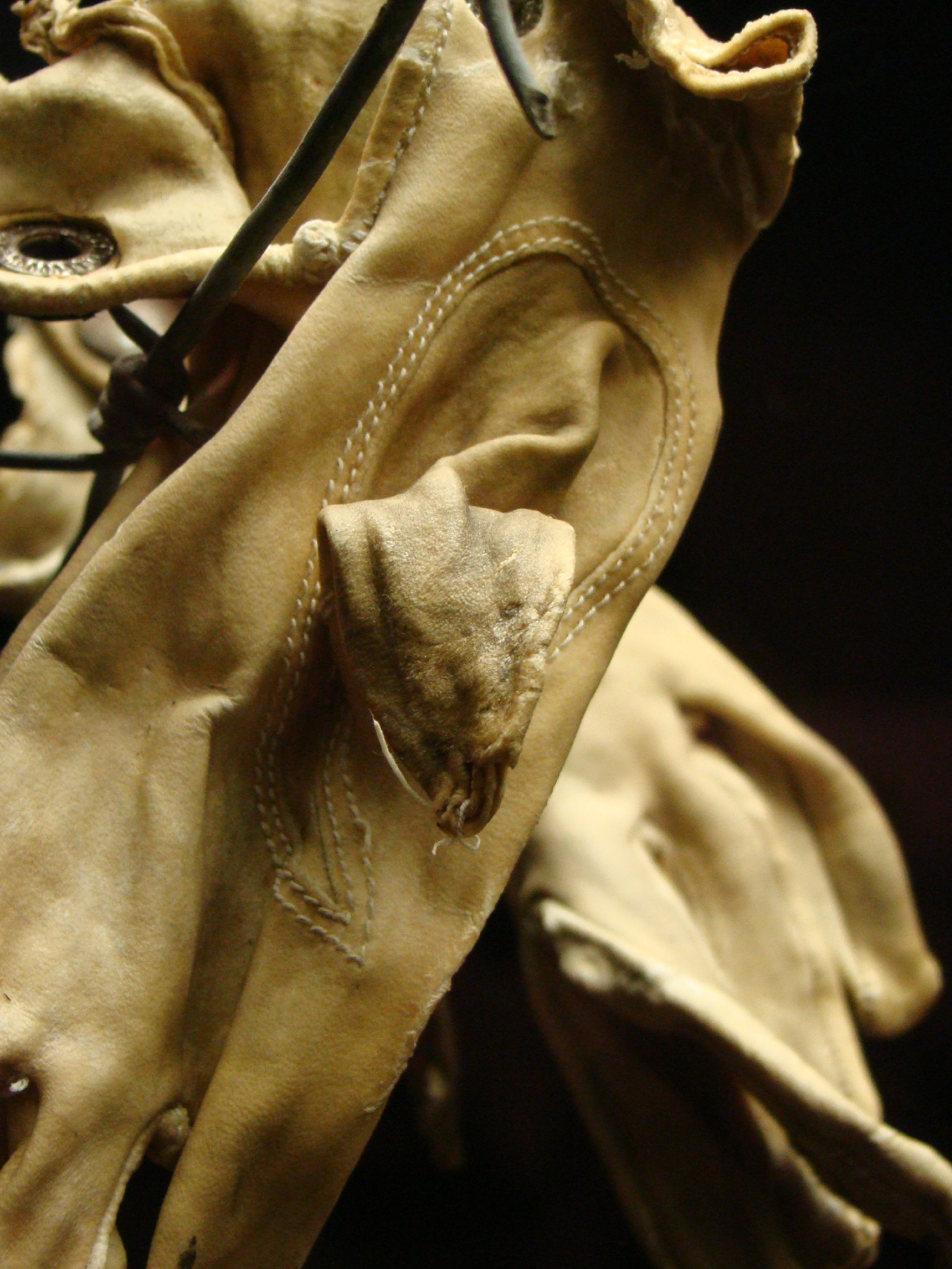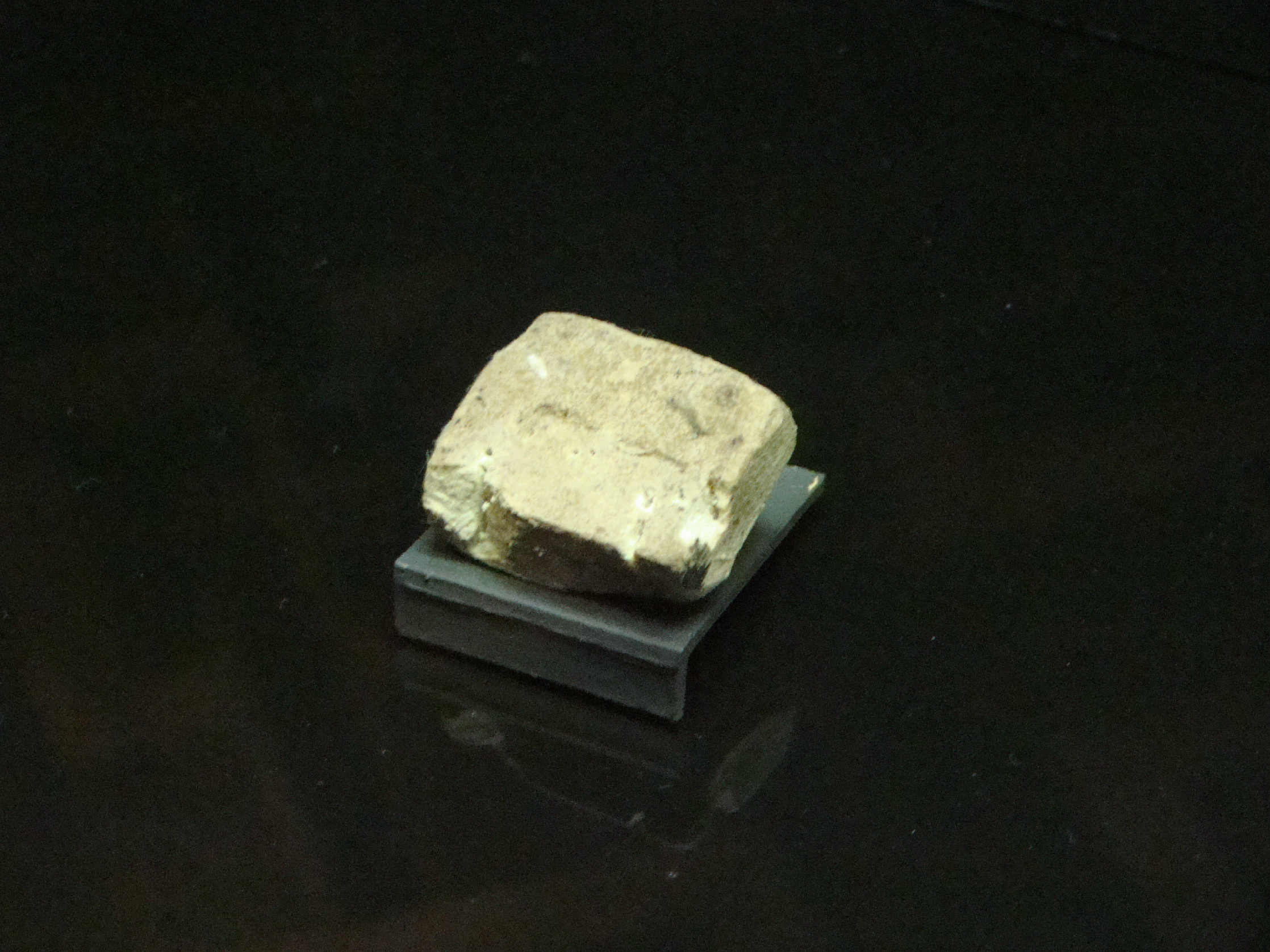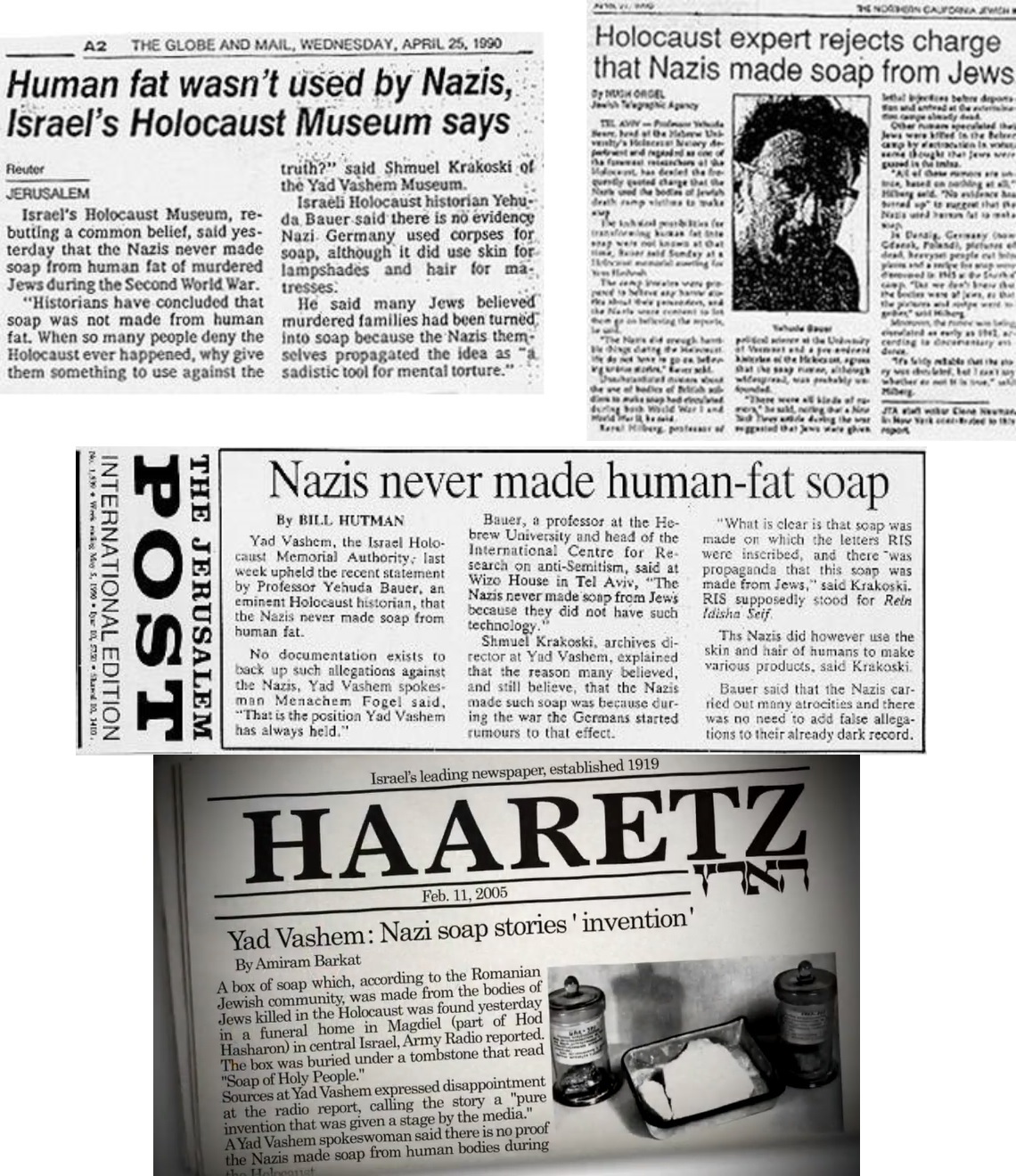[Note: As this article is reconstructed from a copy some
content/layout may vary from the original posting.]
Nazi soap & human skin gloves in Kiev museum
This is a 25-year-old Zygmunt (Siegmund) Mazur, a
Polish laboratory technician at the German run Danzig Anatomical
Institute, pictured at his May 12, 1945 interrogation by Colonel
Grzegorz Korczyński, head of the Gdansk WUBP,
a regional division of the MBP,
the Polish-communist secret police, an outfit founded and controlled by
the NKVD.
Mazur died in a Gdańsk prison, supposedly of typhus
(no post-mortem was conducted) possibly hours, but a maximum of six days
after appearing at an NKVD press
conference in Gdansk on July 8, 1945, where he
confirmed to journalists that he had boiled human fat into soap at the
Danzig Anatomical Institute.
The result of his May 12 interrogation was a
confession that makes up part of Nuremberg document USSR-197,
excerpts of which Soviet prosecutor L. N. Smirnov read into the trial transcript on
February 19, 1946:
"The fat of the human bodies was collected by
Borkmann and Reichert. I boiled the soap out of the bodies of women
and men. The process of boiling alone took several days- from 3 to
7. During two manufacturing processes, in which I directly
participated, more than 25 kilograms of soap were produced. The
amount of human fat necessary for these two processes was 70 to 80
kilograms collected from some 40 bodies."
Mazur also confirmed that human skin was processed
at the Danzig Anatomical Institute:
"In the same way as for human fat, Professor Spanner (director of
the Danzig AI) ordered us to collect human skin, which after having
been cleaned of fat was treated by certain chemical products. ...
The 'finished' skin was packed in boxes and used for special
purposes which I don't know."
Holocaust promoters have long since discarded many
of their ridiculous claims about Nazi utilization of corpses which they
themselves started in November
1942, but still maintain that
soap from human corpses was produced in small, or experimental
quantities in the Danzig Anatomical Institute—contradicting the very NKVD-obtained testimonial
evidence that they rely so heavily upon.
After reading a recent article by
Klaus Schwensen on Inconvenient History in which he mentions that soap
and gloves made from humans are displayed in the Soviet-built Museum of
the Great Patriotic War in Kiev, I decided to visit and see for myself.

The 200 foot tall Motherland statute on top of the Museum of the
Great Patriotic War, Kiev (
enlarged
version)
This is Hall 6 inside the museum which contains the exhibition
named "Nazi Occupation." In the centre of the hall (which is
more of a room than a hall) is a guillotine. A guillotine was
mentioned in a further confession by
Mazur—also part USSR-197—following his interrogation on May 28,
1945 by the Red Army's Lieutenant-Colonel Geitman and Major
Kadensky. Unfortunately I was not aware of that when I visited,
so I didn't photograph the museum sign by the leg of the
guillotine.
The above display case is to the left of the guillotine in
my photo. The text on the sign reads:
Рукавички,
виготовлені з людської шкіри.
Мило, виготовлене з
людського жиру в одному з одному з гітлерівських
концтаборів.
За роки "нового
порядку", встановленого нацистами, в концентраційних
таборах перебувало 18 млн. осіб з 30 країн Європи.
12 млн. Були знищені.
Німецький мішок.
Наручники.
Translated from
Ukrainian (improvements welcomed):
Gloves made of human skin.
Soap made from
human fat in one of one of Hitler's concentration camps.
During the years
of the "new order" established by the Nazis, 18
million people from 30 European countries were taken
to their concentration camps. 12 million were
destroyed.
German bag.
Handcuffs.
As you can tell from the photograph of the entire display case,
this bar of "soap made from human fat" is pretty small, I'd
guess that it was around 4 cms in length.
------------------------------
"When a Jew, in America or in South Africa, talks to
his Jewish companions about 'our' government, he means the
government of Israel."
- David Ben-Gurion, Israeli Prime Minister

Viva Palestina!
Latest Additions
- in English
What is this Jewish
carnage
really about? - The background to
atrocities
Videos on Farrakhan, the Nation of Islam and Blacks and Jews

How Jewish Films and Television Promotes bias Against
Muslims
Judaism is Nobody's
Friend
Judaism is the Jews' strategy to
dominate non-Jews.
Jewish War Against
Lebanon!
Islam and Revolution
By Ahmed Rami
Hasbara -
The Jewish manual
for media deceptions
Celebrities bowing to their Jewish masters

Elie Wiesel - A Prominent False Witness
By Robert Faurisson
The Gaza atrocity 2008-2009

Iraq - war and occupation
Jewish War On
Syria!
CNN's Jewish version of "diversity"
- Lists the main Jewish agents
Hezbollah the Beautiful
Americans, where is your own Hezbollah?
Black Muslim leader Louis Farrakhan's Epic Speech in Madison Square
Garden, New York
 - A must see!
- A must see!
"War on Terror" -
on Israel's behalf!
World Jewish Congress: Billionaires, Oligarchs, Global Influencers for Israel
Interview with anti-Zionist veteran Ahmed Rami of Radio Islam
- On ISIS, "Neo-Nazis", Syria, Judaism, Islam, Russia...
Britain under Jewish
occupation!

Jewish World Power
West Europe
East Europe
Americas
Asia
Middle East
Africa
U.N.
E.U.
The Internet and
Israeli-Jewish infiltration/manipulations
Books
- Important collection of titles
The Judaization of
China
Israel: Jewish Supremacy in Action
- By David Duke
The Power of Jews in France
Jew Goldstone appointed by UN to investigate War Crimes in Gaza

The best book on Jewish Power
The Israel Lobby
- From the book
Jews and Crime - The archive
Sayanim - Israel's and Mossad's Jewish helpers abroad
Listen to Louis Farrakhan's Speech
- A must hear!
The Israeli Nuclear Threat
The "Six
Million" Myth
"Jewish History"
- a bookreview
Putin and the
Jews of Russia
Israel's attack on US warship USS Liberty
- Massacre in the Mediterranean
Jewish "Religion" - What is
it?
Medias
in the hands of racists
Strauss-Kahn - IMF chief and member of Israel lobby group

Stop Jewish Apartheid!
The Jews behind Islamophobia
Israel controls U.S. Presidents
Biden, Trump, Obama, Bush, Clinton...
The Victories of Revisionism
By Professor Robert Faurisson
The Jewish hand behind Internet
The Jews behind Google, Facebook, Wikipedia,
Yahoo!, MySpace, eBay...
"Jews, who want to be decent human beings, have to renounce being Jewish"
Jewish War Against Iran
Jewish Manipulation of World Leaders

Al Jazeera English under
Jewish infiltration

Garaudy's "The Founding
Myths
of Israeli Politics"
Jewish hate against Christians
By Prof. Israel Shahak
Introduction to Revisionist
Thought
- By Ernst Zündel
Karl Marx: The Jewish Question
Reel Bad Arabs
- Revealing the racist Jewish Hollywood propaganda
"Anti-Semitism" - What is it?
Videos
 - Important collection
- Important collection
The Jews Banished 47 Times in 1000 Years - Why?
Zionist
strategies
- Plotting invasions, formenting civil wars, interreligious strife,
stoking racial hatreds and race war
The International Jew
By Henry Ford
Pravda interviews Ahmed Rami

Shahak's
"Jewish History,
Jewish Religion"
The Jewish plan to destroy the Arab countries
- From the World Zionist Organization
Judaism and Zionism inseparable
Revealing photos of the Jews 
Horrors of ISIS Created by Zionist Supremacy
- By David Duke
Racist Jewish Fundamentalism
The Freedom Fighters:
 Hezbollah
- Lebanon
Hezbollah
- Lebanon
 Nation of Islam
- U.S.A.
Nation of Islam
- U.S.A.
Jewish Influence in America

- Government, Media, Finance...
"Jews" from
Khazaria stealing the land of Palestine
The U.S. cost of supporting Israel
Turkey, Ataturk and
the Jews

The truth about the Talmud
Israel and the Ongoing Holocaust in Congo
Jews DO control the media -
a Jew brags!
- Revealing Jewish article
Abbas - The Traitor
Protocols of Zion
- The whole book!

Encyclopedia of the
Palestine Problem
The
"Holocaust" - 120 Questions and Answers
Quotes
- On Jewish Power / Zionism
Caricatures / Cartoons

Activism!
- Join the Fight!




























